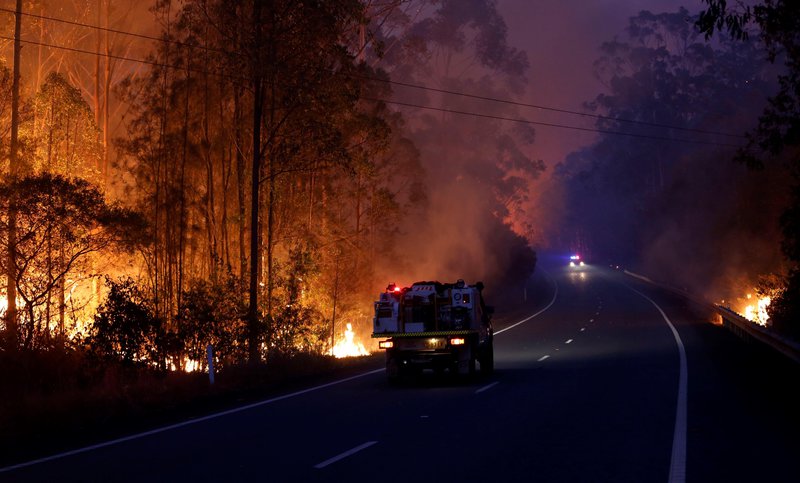Australia’s burning questions
The great tragedy of the Australian bushfires -- that even after several months are still consuming huge parts of the country -- is that so much of the destruction is entirely avoidable.
How can this be? Why have more than 1 billion animals perished? Why have over 2,000 thousand homes been destroyed? Why have 23 people died and how is it possible that a total area of land bigger than Portugal or Hungary has already been burnt out?
The simplest correct answer is that Australia has always suffered from these kinds of wild blazes but that this time around the ‘fire season’ started much earlier and the spread of the fires was much wider than usual, with hundreds of them burning out of control at any one time.
Firefighters (most of whom are unpaid volunteers) have been almost completely powerless to stop the hydra-headed infernos because of continued fierce winds and the extreme high temperatures that the fires themselves have partly made worse.
Another major cause of the devastation can be accurately put down to state and federal governments underfunding emergency services for year after year.
ln an attempt to push any responsibility away from his own ultra-conservative party, Prime Minister Scott Morrison has used all kinds of political trickery and lies across the mainstream media (which fully supports him). He has also been widely condemned for choosing to go on holiday to Hawaii during the crisis, as did the relevant state minister from his party.
As well as that, Morrison has repeatedly argued that the global climate crisis is not a factor in this disaster, despite overwhelming scientific evidence showing it undoubtedly is.
As a fundamentalist Pentecostal Christian, he has instead maintained it is all the fault of arsonists or “greenies” who oppose targeted ‘back-burning’ to stop fires spreading. (The Green Party has always supported it, in fact.)
Accusations of climate denial against Morrison have come as thick and fast as the air that has choked the populations of Australia’s big cities of Canberra, Melbourne and Sydney over periods of weeks and months.
Even several former leaders of the PM’s own party have called for rapid action against carbon emissions and emergency policies to combat the years-long drought across the nation.
In many Australians’ experience, these fires have come on top of continuing and severe tap water shortages in many of Australia’s rural towns. Some, such as the small rural village of Murrurundi (located in a once relatively fertile area) have already run out of water and are having to buy in supplies privately. An increasing number of towns are expected to follow this disturbing practice soon.
Of course, water running low in Australian drought periods is nothing new.
What is causing outrage though amongst groups as diverse as farmers and environmentalists, is the massive (and often unmeasured) amounts of natural water from rivers, lakes and underground sources that are being sold off to private companies.
The Indian (multi-national) mining company Adani (which has the absurd, double-speak slogan of “Growth with Goodness”) extracts coal from the earth, among other things. It runs a business that is a major cause of global warming through carbon emissions and it requires large amounts of water in the coal cleaning process.
Adani -- which has paid not one cent of company tax in Australia -- will be allowed to siphon off 12.5 billion litres of local river water up until the year 2077. Another of its mines is being given $4.4 billion in public subsidies from the government. An open secret muddies the waters here: mining industries have been major financial donors to the conservative political parties in Australia for many years.
Corruption? You bet it is. For the governing parties, it’s raining money. This at a time when both rain and money are what’s really needed across a land that is dying of thirst and from fires on a biblical scale that Morrison had only ever read about.

